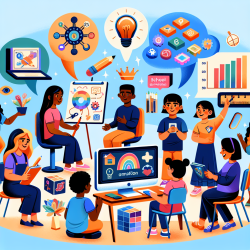As practitioners in the field of speech-language pathology, understanding the unique phonological development of bilingual children with Specific Language Impairment (SLI) is crucial. The study "The Phonological Abilities of Bilingual Children with Specific Language Impairment: A Descriptive Analysis" by Andrea A. N. MacLeod and Rebecca J. McCauley provides valuable insights into this area.
The research compared the phonological abilities of five Canadian French-English bilingual children with SLI to those of four French monolingual children with SLI and four normally developing monolingual children. The findings highlighted that bilingual children with SLI exhibit phonological abilities that are both similar and different from their monolingual peers.
Here are some key takeaways for practitioners:
- Phonological Delay vs. Deviance: The study found that the phonological development of bilingual children with SLI is more indicative of a delay rather than deviance. This means their phonetic inventories are similar to younger, language-matched peers, suggesting a developmental lag rather than a fundamentally different phonological process.
- Complexity and Accuracy: Bilingual children with SLI tend to attempt more complex words but with less accurate consonant production compared to their monolingual peers. This could be a strategy to differentiate between the two languages and manage the additional processing load.
- Dialect Features: The study also observed that the acquisition of dialect features, such as affrication in Canadian French, occurs later in bilingual children with SLI compared to their monolingual peers. This highlights the need for targeted interventions that consider these dialectal variations.
For practitioners, these insights emphasize the importance of:
- Using comprehensive phonological measures, such as phonological mean length of utterance, to capture the complexity of bilingual children's speech.
- Providing interventions that address both the phonological delay and the specific challenges posed by bilingualism.
- Continuing research to better understand the phonological development of bilingual children and to refine diagnostic and intervention strategies.
By incorporating these findings into your practice, you can better support bilingual children with SLI, helping them to achieve their full phonological potential.
To read the original research paper, please follow this link: The Phonological Abilities of Bilingual Children with Specific Language Impairment: A Descriptive Analysis.










